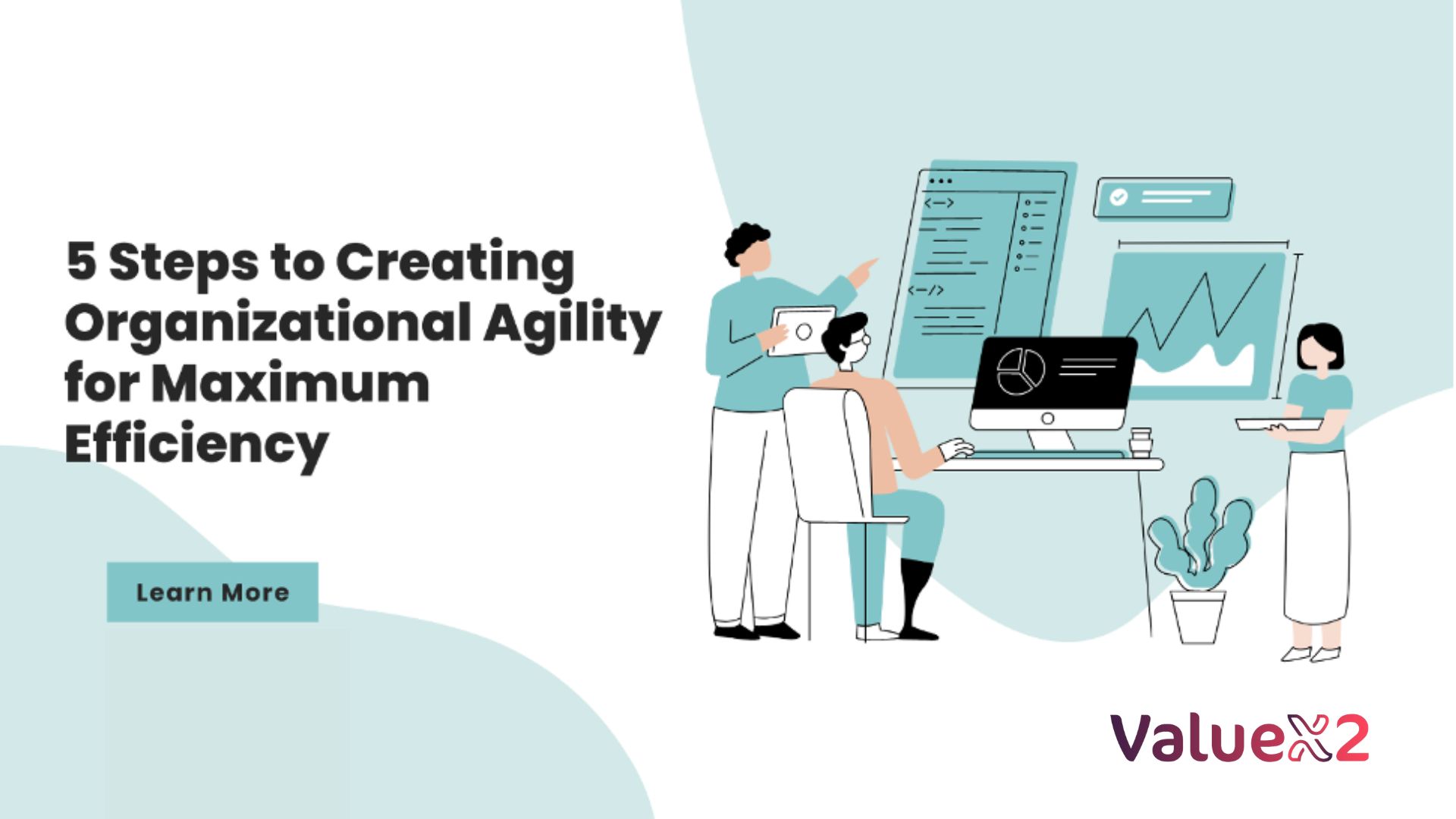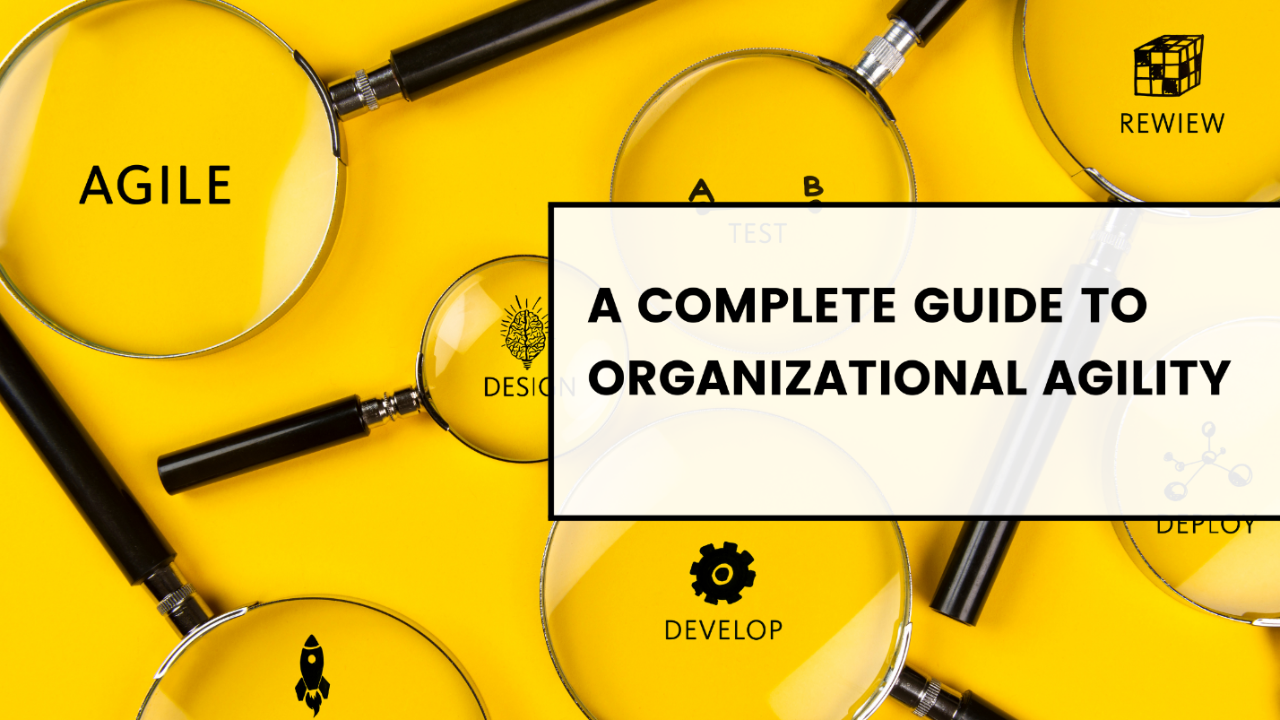Learn what is organizational agility and the 5 key steps that can make your organization agile and increase its efficiency.

Being agile and effective are critical abilities for every enterprise or employer. However, without a defined plan in the area, it might not be possible to attain both. This post will help you with the 5 key steps that you can take to establish and improve organizational agility for maximum efficiency. Continue reading to learn more!
Introduction: Defining Organizational Agility
Organizational agility is the capacity of a company to swiftly respond to modifications in the outside environment. It is a key function of a successful enterprise and is essential for survival in a rapidly changing world.
Many factors contribute to organizational agility; however, three of the most commonly used are:
- The capability to quickly adapt to change
- The potential to efficiently make use of assets
- The ability to efficaciously talk and collaborate
Organizational agility isn’t always a brand-new concept, but it has come to be more and more critical in recent years as the pace of change has accelerated. To survive and thrive in a modern, ever-changing global economy, businesses should be capable of rapidly adapting to adjustments in their environment.
There are many ways to boost organizational agility, but three of the most critical are:
- Increasing flexibility through organizational layout
- Implementing agile processes and practices
- Fostering a tradition of innovation and gaining knowledge of
Step 1: Identify and Analyze Processes
The capability of a corporation to modify quickly to changes in its surroundings is known as organizational agility. It is a vital driver of organizational fulfilment and a necessity for survival in a state-of-the-art, volatile commercial enterprise climate. To be agile, corporations should first pick out and assess present methods before making adjustments to enhance performance and responsiveness.
The first step in achieving organizational agility is identifying and analyzing your business enterprise’s present techniques. Understanding how work is presently being performed, what tools and resources are being used, and where bottlenecks or inefficiencies occur are all part of this. Once you have a complete understanding of your enterprise’s approaches, you may start making changes to enhance efficiency to help you respond to emergencies quickly.
Some recommendations for improving organizational agility include:
- Streamlining approaches by putting off pointless steps or responsibilities
- Automating repetitive responsibilities wherever possible
- Improving communication and collaboration among teams
- Encouraging innovation in the course of the company
- Creating flexible structures that could quickly pivot in reaction to changing instances
Step 2: Prioritize Change
The first step in developing organizational agility is to prioritize change. Many businesses make the mistake of trying to alter the whole lot without delay, resulting in confusion and mayhem. It is crucial to start modestly and steadily developing the area of your trade as you obtain expertise.
Beginning with your most essential goals and working your way down from there is one method to prioritize trade. Once you have identified them, you can begin operating on them right away.
Remember to include your personnel in the process of setting priorities properly. They may be the ones who need to implement the modifications; therefore, it’s far more important that they understand why certain changes are being made and how they will contribute to their implementation.
Step 3: Create an Agile Mindset
Most people associate agility with pace and flexibility once they think of the phrase. Agility, however, is much more than that. Having a precise mentality is likewise crucial.
Knowing what agility truly is is the first step in developing an agile mentality. The potential to swiftly adjust to exchange is simply as critical as being brief and flexible. This includes being open to new ideas, attempting new things, and constantly gaining knowledge.
It also involves viewing change as a positive component. Because alternate is unavoidable, why now not embrace it? Accepting exchange may additionally help you stay ahead of the opposition and be more prepared for something life throws at you.
If you could adopt these three standards, you may be well on your way to creating an agile attitude within your enterprise.
Step 4: Utilize Technology for Maximum Efficiency
Technology is crucial in contemporary business. It has the electricity to construct or ruin a firm; consequently, it should be used intelligently. Here are four procedures to maximize productivity in your business with the aid of technology:
- Make monotonous chores computerized. Many apps and software programs are available to automate repetitive operations consisting of customer statistics entry or order processing. This allows your employees to focus on more vital duties.
- Make use of record analytics. Data analytics tools can assist you in making sense of the massive quantities of facts generated with the aid of your organization on a daily basis. With this information, you can make more informed decisions about where to allocate resources and how to improve strategies.
- Put collaboration gear in the area. Collaboration technology, like challenge management software, can aid in enhancing group communication and collaboration. This can result in a more effective use of time and resources and, as a result, a more efficient business enterprise.
- Make investments in cloud-based technologies. Cloud-based solutions provide numerous benefits to corporations, including better flexibility and scalability. With a cloud-based total machine, you can speedily upload and remove people as needed, as well as scale up or down depending on your enterprise’s necessities.
Step 5: Monitor Progress and Adjust as Needed
The final section of developing organizational agility is to monitor development and make adjustments as needed. This degree is critical to ensuring that the company can adapt and evolve as its environment changes. Organizations need to have a mechanism in place to tune success and discover regions where enhancements are needed.
Organizations can measure their fulfilment in a lot of ways. One technique is to assign measurements and key overall performance indicators (KPIs). Organizations can find areas for development and possibilities for improvement via monitoring metrics. Regular check-ins with a team of workers are another method for degree development. This allows firms to obtain comments on how matters are progressing and identify any regions of concern.
It’s time to make any important adjustments after development has been monitored. This may mean changing the way matters are performed or introducing new procedures or approaches. Whatever the scenario may be, the concept is to continuously adapt and trade to allow the corporation to stay nimble and green.
Conclusion
Creating organizational agility is a crucial step in maximizing efficiency in any enterprise. You may set your commercial enterprise up for fulfilment by reaching higher ranges of performance by concentrating on cultivating an agile lifestyle, developing powerful tactics and systems, ensuring employee involvement, permitting statistics-driven selection and embracing technological developments. Your commercial enterprise may additionally gain authentic tactical agility with the perfect attitude and willpower from the leadership group, to benefit all stakeholders in the long term.

Bhavna is an Agile Coach and Consultant with over a decade of experience in advisory, corporate finance, IT assurance, and operations at Big 4 and within the industry in the UK and India. She has recently been the CEO of a start-up where she implemented agile practices within HR, Marketing, and Product teams.
She is also a SAFe® Practice Consultant (SPC) and authorized instructor for ICAgile Agility in HR (ICP-AHR), Agility in Marketing (ICP-MKG), and Business Agility Foundations (ICP – BAF) training courses. She provides training for agile transformation to corporate, public, and private batches, as well as consulting for enterprise agile transformation.






